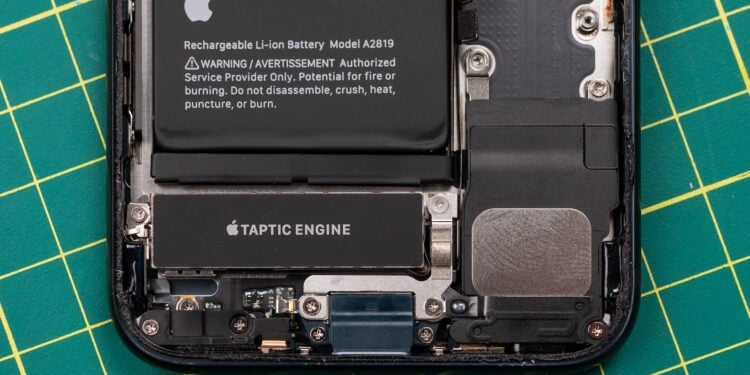Apple is continually working on new technologies that not only improve the user experience but also increase the durability of its devices. A recent patent reveals that the company is developing a new generation of its Taptic Engine. This advancement is intended to make iPhones, Apple Watches, and other devices more resistant to drops and collisions.
The Taptic Engine has been one of the core components in Apple products for years. It provides precise vibration feedback and is a key component of the iPhone and Apple Watch interaction. At the same time, it's a mechanical component that's particularly vulnerable to damage in the event of a drop. With the patent now granted, Apple is hinting at how future devices could become more robust and durable.
Patent focusing on shock resistance
The patent, granted by the U.S. Patent and Trademark Office, is titled "Electronic Device with Shock-Resistant Haptic Actuator." It describes a taptic engine protected by a system of nonlinear, cantilevered springs. The goal is to better protect sensitive internal components from damage caused by impact forces. The unique design lies in the combination of springs of varying thicknesses with beveled edges. These respond flexibly to light impacts and stiffen under greater loads. This distributes the energy in a controlled manner, rather than directly impacting rigid surfaces.
How the new Taptic Engine works
During normal operation, a moving mass within the engine generates the haptic feedback. However, in the event of a fall or impact, the system redirects this mass to spring assemblies integrated into the housing cover. There, a nonlinear stiffness profile ensures that the impact force is distributed over a longer period of time. This significantly reduces the risk of material failure and protects the components better than previous designs.
Optimization of size and weight
In addition to shock resistance, the patent also considers minimizing size and weight. The attached images show a design for both smartphones and smartwatches. Several spring assemblies are integrated directly into the case lids, making the design both space-saving and stable.
Significance for future Apple products
Even though patent applications don't necessarily allow direct conclusions about future products, they do provide clues about development direction. For Apple, Taptic Engines are a critical component in iPhones and Apple Watches. A more shock-resistant version would not only extend the lifespan but also increase the reliability of the devices. Implementation in future models therefore seems very likely.
Apple strengthens the durability of its core technologies
The new patent underscores that Apple is working specifically on further developing its Taptic Engine. With an innovative spring mechanism, the company aims to increase shock resistance without compromising precision and feedback. If the technology finds its way into production devices, iPhones and Apple Watches could become not only smarter but also more robust in the future. The best products for you: Our Amazon Storefront offers a wide selection of accessories, including those for HomeKit. (Image: Shutterstock / Hopix Art)
- Apple Ring – new patents give hope for an innovative wearable
- Apple Vision Pro could get more touch controls
- Apple files patent for iPhone made from a single piece of glass
- Apple is working on light signals for Apple Ring and more
- Apple files patent for new mouse button in keyboard
- Will Apple Pencil soon be available as a stylus for all Apple devices?
- Apple patent proves: AirPods with cameras in development
- Apple could improve Vision Pro for travel via software
- AirPods learn to read lips: Apple plans silent control
- Apple patent shows: iPhone could soon control everything automatically
- New research: Apple develops hinges for foldable iPhone
- Magic Mouse: Apple is working on touchless control
- Apple Patent: More action buttons for iPhones and more
- iPhone: Face ID under the display is within reach
- Apple Vision Pro: Patent shows display in the headband
- Apple is getting closer to the foldable iPhone





